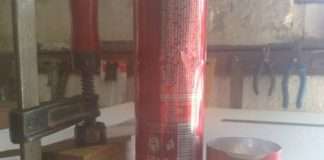Archaeologists excavating a Roman fort in Northumberland, England, have unearthed a remarkable blood-red gemstone, offering new insights into the lives and origins of those stationed far from the Roman Empire’s heart. The intricate gemstone, depicting a grape-harvesting scene from Roman mythology, is considered uniquely rare for northern Europe and provides valuable information about trade, craftsmanship, and personal connections in Roman Britain.
The Discovery: A Glimpse into Roman Mythology
The gemstone, originally set in a signet ring, was discovered during the fifth season of excavations at Bremenium, a Roman fort located approximately 24 miles (39 kilometers) north of Hadrian’s Wall. The intricate design shows two winged Cupid figures harvesting grapes from a tree, accompanied by a goat-like creature reaching up on its hind legs. According to Richard Carlton, an archaeologist at Newcastle University and excavation director, this imagery is exceptionally rare in northern Europe. The gem was likely used by a Roman man as his personal correspondence stamp, indicating a level of sophistication and connection to Roman artistic traditions.
Bremenium: A Vital Roman Outpost
Bremenium’s strategic location and extensive rebuilding history make it a significant site for understanding Roman military operations and communication networks in Scotland. Originally constructed in the late first century A.D., the fort played a crucial role in controlling northern territories and warning the Roman army about potential attacks. Following the completion of Hadrian’s Wall in A.D. 128, Bremenium evolved into a key communications hub, maintaining contact with Roman forces further south.
Ongoing Excavations and Key Findings
Since 2021, archaeological work has primarily focused on structures surrounding the main fort, revealing layers of construction and reconstruction dating back to the late first and third centuries. Previous excavations at Bremenium also uncovered a rare lime kiln, used for producing quicklime—a fundamental ingredient for mortar, plaster, and concrete—essential for building the fort’s defenses. This year’s findings confirm the presence of the inner enclosure wall, further contributing to our understanding of the fort’s structure and development.
A Treasure Trove of Artifacts
Beyond the exceptional gemstone, the 2025 excavations yielded a diverse collection of Roman artifacts, highlighting the breadth of the Roman Empire’s reach and the vibrant daily life within Bremenium:
- Roman Pottery from Across the Empire: Fragments and complete vessels demonstrate extensive trade networks, including an amphora from northern Spain used to transport olive oil.
- Military Equipment: A lead sling bullet from a Roman soldier’s kit provides insights into the weaponry and military practices of the time.
- Religious Artifacts: A votive oil lamp suggests the presence of religious practices and beliefs within the fort’s community.
- Official Seals: A lead seal used for official documents points to the fort’s administrative functions.
- Personal Adornments: Several brooches and two engraved gems (intaglios) reveal aspects of personal style and craftsmanship.
Unraveling the Origin of the Gemstone’s Owner
The unique iconography of the gemstone suggests that its owner likely originated from the Mediterranean region, a theory supported by its similarity to intaglios found in northern Italy and Croatia. “It seems likely that the gem reflects the likely origin of the wearer, who may have come from the Mediterranean,” explained Richard Carlton to the BBC. This discovery underscores the mobility and interconnectedness of individuals within the Roman Empire, even in its remote northernmost reaches.
Continuing the Investigation
The exceptional quantity and quality of the 2025 finds have provided invaluable new insights into trade, craftsmanship, and the everyday lives of those who lived and worked at Bremenium. The Redesdale Archaeology Group, led by Bob Jackson, is planning to return to Bremenium next year to continue excavations, with the hope of uncovering even more secrets about this fascinating Roman outpost. These continued investigations promise to further illuminate the story of Roman life in northern Britain.

























